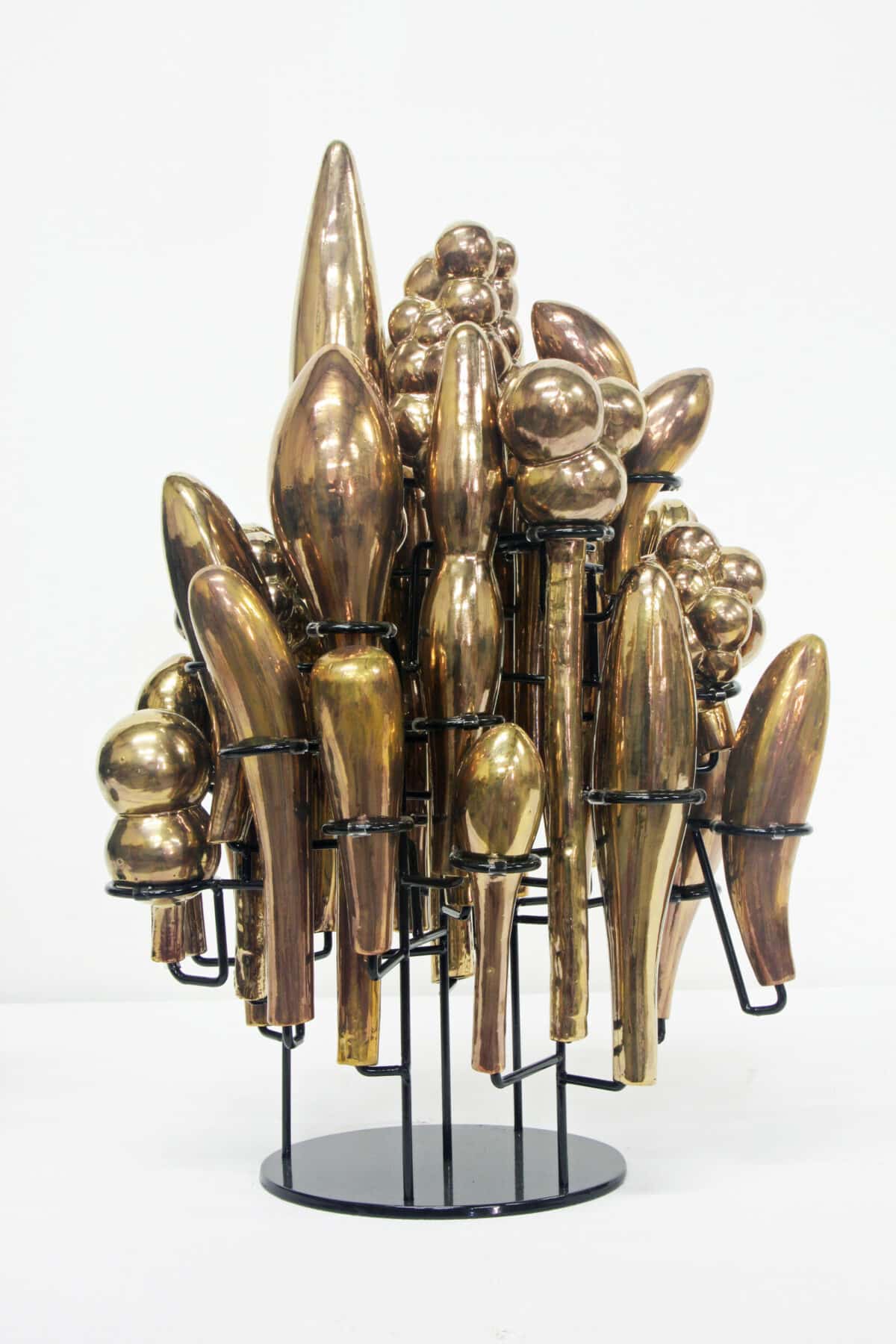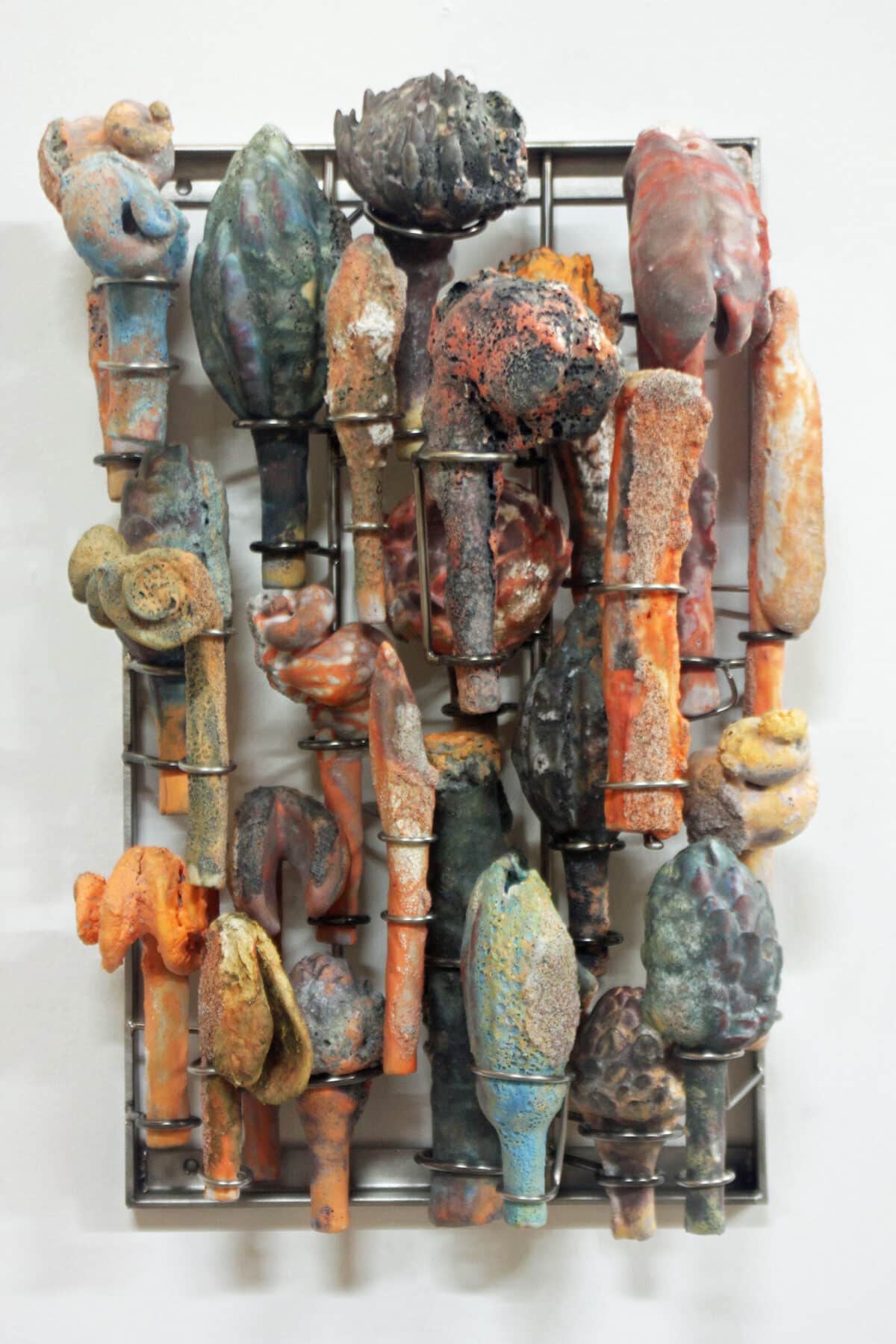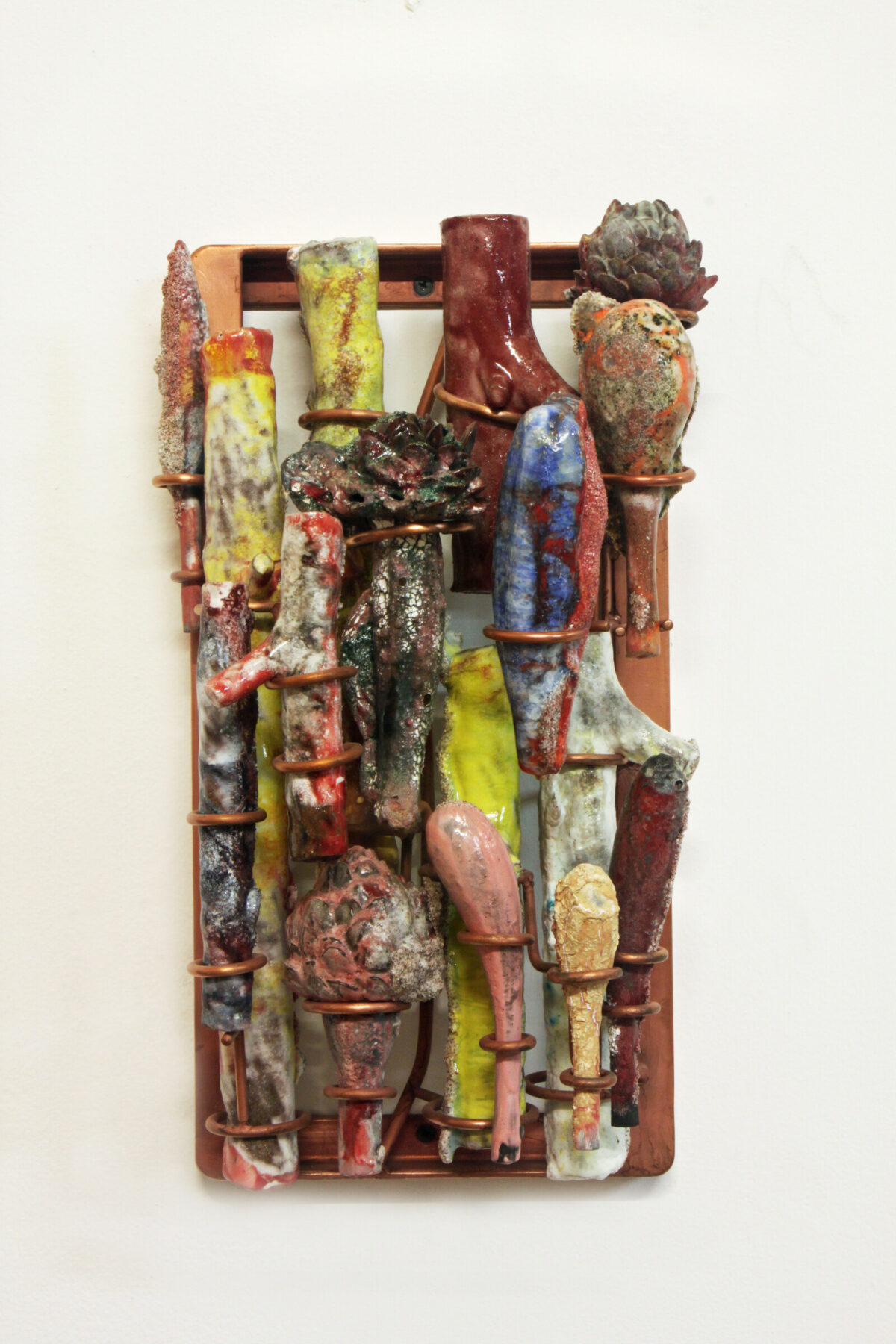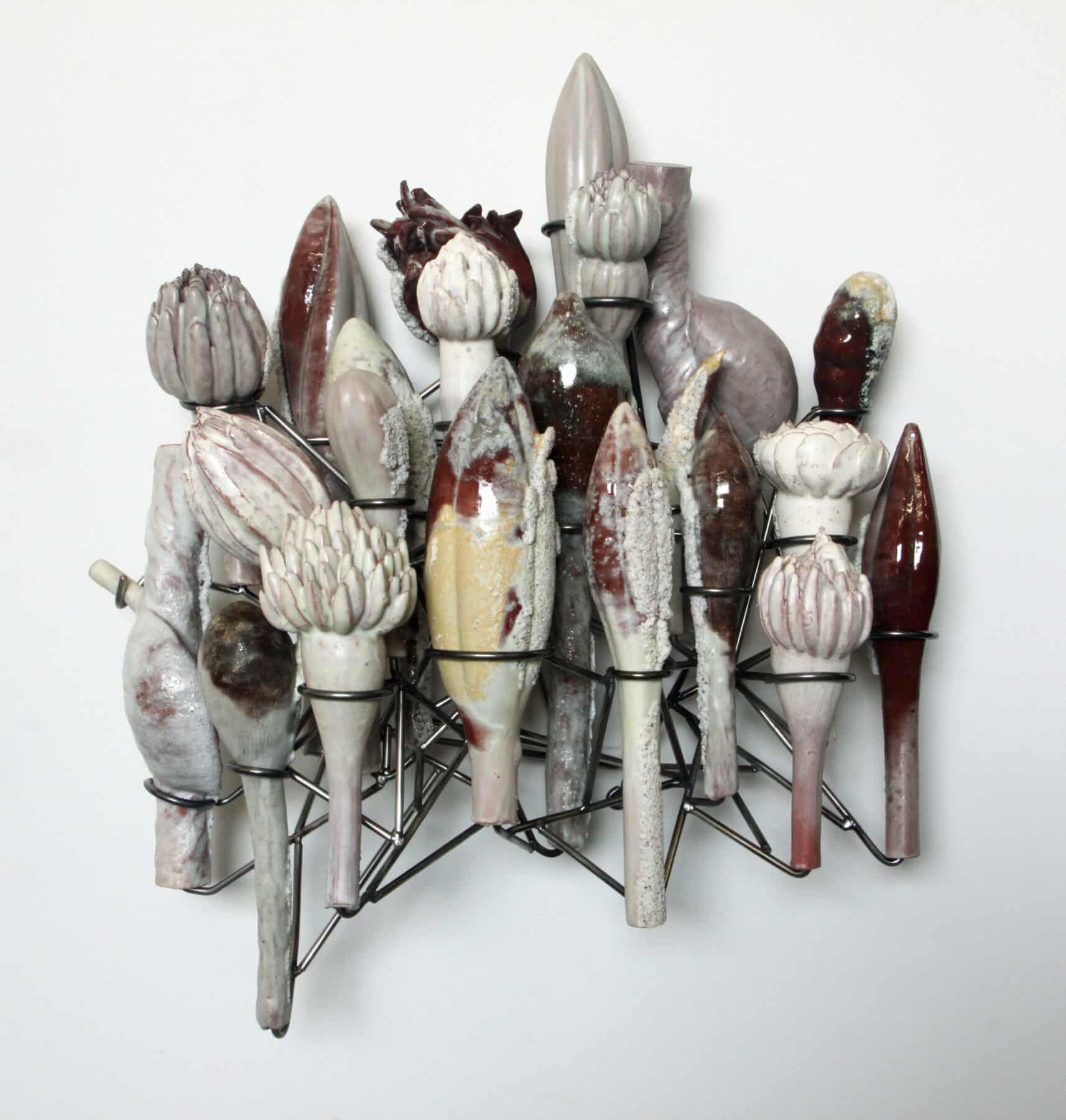Agricultural Cycles as Allegories

David Hicks creates ceramic sculptures inspired by nature and industrial agriculture. Growing up in California’s Central Valley, he was attracted to the crops that grew in the fields around his home. But he was also keenly aware of the work of migrant laborers who enable agriculture as a system, as well as the politics of their work. Hicks conceptualizes the hands of these workers, and the vegetables themselves, as elements of an increasingly standardized process.
Responding to the forms of plants and organic life, Hicks, who now lives in North Carolina, thinks of agricultural cycles as allegories for the human condition. He writes: “I am still digging in the dirt to understand my attraction to the agricultural. Shapes and themes I reference can be found in the fields surrounding my home. In the agricultural world there are cycles that feel like allegorical references to human struggle, a struggle that starts with fertilization, moves through growth and finally ends in decay.”
Hicks forms his terracotta sculptures by hand, coating them with a copper luster that fuses to his glazes and results in a thin, undulating surface. He clusters his individual clay pieces to form compositions that feature an assortment of textures, colors, and shapes. The pieces are suspended from the ceiling with natural fiber twine or supported by free-standing or wall-mounted metal armatures. A single installation is very complex.
—J. D. Talasek


DAVID HICKS, Citrus and Turquoise, 5 x 13 x 81 in., ceramic and stainless steel, 2018 
DAVID HICKS, Ultra Chroma Copper, 17 x 9 x 7 in., 2018

Images courtesy of the artist and Mindy Solomon Gallery. Visit the artist’s website at www.dh-studio.com.
